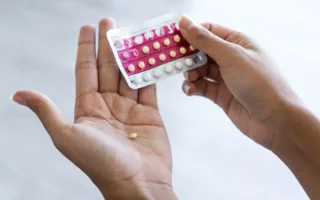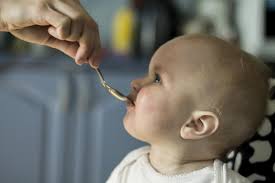Grasping the enigmatic concept of how many cups of water dwell within a typical water bottle is pivotal in your quest for hydration. Dive into this article, where we unravel the mysteries, allowing you to assess your daily aqua consumption and ensure your body’s thirst is quenched. How many cups of water are in a water bottle?” is a common question for those tracking their hydration.
How many cups of water are in a water bottle?
The enigmatic world of water bottles unveils a diverse spectrum of liquid volumes, spanning from one to four cups. A typical vessel, bearing 16.9 fluid ounces or 500 milliliters, approximately mirrors the essence of 2 cups of aqueous sustenance. Yet, beware of the capricious nature of bottle sizes, beckoning you to scrutinize the label or engage in meticulous measurement. Unlock the secret to monitoring your daily hydration through this perplexing conversion.
Do You Really Need 8 Cups of Water Per Day?
While the “8 cups a day” mantra echoes across the masses, the labyrinth of individual hydration needs reveals a multifaceted truth. Activity levels, climate, and the canvas of body proportions all paint unique water portraits. The pursuit of hydration, a noble quest, may demand a different number of challenges for each. Tune in to your body’s cryptic signals and heed the call of thirst to decipher the elusive equation of your ideal hydration.
How to Stay Hydrated Without Checking Cups
It’s easy to stay hydrated without measuring cups. Observe your body’s signals and only drink when you’re thirsty. Choose hydrating foods like fruits and vegetables. Use a reusable water bottle that you carry all day. Keep an eye on the color of your urine; pale yellow is a good sign that you’re hydrated. Put hydration first for your general health.
Water Bottle Sizes for Kids
It’s crucial to select the proper water bottle size for children. Kid-sized water bottles typically hold 12 to 16 ounces (355 to 473 ml) to accommodate their smaller hands and hydration requirements. These portions are manageable for kids and guarantee that they are sufficiently hydrated throughout the day, whether they are at school, playing, or participating in sports.
Why is water bottle size important?
The size of the water bottle is important for hydration and usability. Children can carry smaller bottles easily, but adults with higher water needs benefit from larger bottles. The ideal size promotes sustained hydration without the need for supplemental weight or refills, making it simple and effective to reach daily water intake targets.
Benefits of Drinking Enough Water Daily
There are various advantages to getting enough water each day. It promotes nutrient absorption, regulates body temperature, and aids with digestion. Drinking enough water enhances mental clarity, energy, and skin health. It eliminates toxins from the body, prevents dehydration, and can help with weight loss by lowering calorie intake. It’s crucial to stay hydrated for general health and wellbeing.
Flushes Toxins
Drinking enough water aids in the removal of toxins from the body through perspiration and urine. This organic cleansing procedure improves organ health and wellness. A simple yet efficient technique to help the body get rid of waste and toxic chemicals is to stay hydrated.
Improved joint function
Enough water consumption reduces friction and discomfort by lubricating joints. Maintaining the synovial fluid that cushions joints through proper hydration encourages mobility and comfort. To reduce stiffness and pain, this is crucial for people with arthritis or joint problems.
Weight Loss
By encouraging satiety, lowering calorie intake, and increasing metabolism, water helps people lose weight. Consuming less and breaking down fat more effectively can help you lose weight and perform better during exercise. The use of water as part of a balanced diet can help you manage your weight. Knowing “how many cups of water are in a water bottle” simplifies daily hydration goals.
Use refillable water bottles
To avoid waste and save money, choose refillable water bottles. These greener options reduce the consumption of single-use plastic and promote a sustainable way of life. They also make it easier to carry water everywhere you go and promote regular hydration.
Amount of Water in One Water Bottle (in Cups)
Usually, a common water bottle holds 2 cups (16 fluid ounces) of water. To find out exactly how much water a given bottle holds, read the label or measure the one you have because bottle sizes can vary.
Is drinking from a water bottle safe?
In general, drinking from a water bottle is secure. The majority of bottles are created with this use in mind and are constructed from secure materials like stainless steel or BPA-free plastic. To prevent bacterial growth and health dangers, it is necessary to clean and maintain them appropriately.
Is consuming water from a water bottle left in a car safe?
The leakage of chemicals from a water bottle into the water can occur if it is left in a hot car. Water bottles should be kept in a cool location for safety.
How to Drink from a Water Bottle Safely
Choose water bottles made of safe materials, clean them frequently, and keep them out of hot conditions to prevent chemical leaching if you want to drink from them safely.
Positive Things Water Can Do to Your Body
Water benefits your body in a variety of ways. It maintains body temperature, moisturizes your skin, promotes metabolism, flushes out toxins, and can even improve cognitive function. In order to maintain overall health and wellbeing, proper hydration is crucial.
Beneficial to your weight loss journey
Water aids in calorie burning, fat metabolism, and hunger control, all of which are helpful for weight loss. Drinking water can help you lose weight since it can lower your calorie intake and improve your ability to exercise by keeping you hydrated.
Can too much water make you sick?
Yes, drinking too much water can result in hyponatremia, often known as water intoxication. It causes symptoms including nausea, headaches, and, in more extreme cases, seizures or coma by diluting the body’s sodium levels. To prevent this, balanced hydration is essential. Understanding “how many cups of water are in a water bottle” helps you stay properly hydrated.
Also Read: Deaths from Boric Acid Suppositories?



